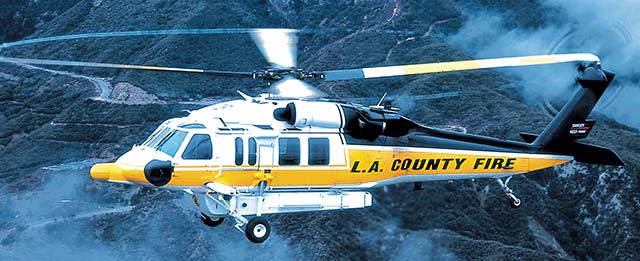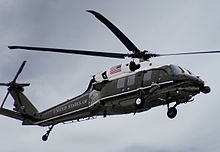A Take a look at the Sikorsky S 70's Duty in Military and Civil Aviation
A Take a look at the Sikorsky S 70's Duty in Military and Civil Aviation
Blog Article
High-Performance Multi-Role Rotorcraft Featuring Advanced Cabin Technologies and Integrated Sensor Equipments
The world of rotorcraft modern technology has seen remarkable innovations in current times, especially in the realm of high-performance multi-role rotorcraft geared up with innovative cabin technologies and perfectly incorporated sensing unit systems. In the following discussion, we will certainly explore the evolution of rotorcraft modern technology, dive into the realm of innovative cockpit technologies, and take a look at the effects of integrated sensing unit systems on the functional versatility and efficiency of contemporary rotorcraft.
Development of Rotorcraft Modern Technology
The evolution of rotorcraft technology has been marked by considerable innovations in aerodynamics, products, and propulsion systems, shaping the abilities and efficiency of modern-day rotorcraft. In addition, improvements in propulsion systems, including extra powerful engines and innovative propulsion technologies, have allowed rotorcraft to achieve greater altitudes, faster rates, and better payloads.
These developments have not just transformed the capabilities of rotorcraft however have likewise broadened their applications across various sectors, including military, industrial, and emergency situation solutions. The continual evolution of rotorcraft innovation remains to drive innovation in the field, pushing the borders of what is possible and shaping the future of vertical trip.
Advanced Cockpit Innovations
Structure upon the foundational developments in the rules of aerodynamics, materials, and propulsion systems, the world of rotorcraft modern technology now shifts emphasis in the direction of pioneering Advanced Cabin Innovations. The combination of cutting-edge technologies within the cabin environment plays a crucial function in improving the functional capabilities, safety and security, and performance of modern-day rotorcraft. sikorsky s 70. Advanced Cockpit Innovations include a wide array of attributes developed to give pilots with enhanced situational understanding, streamlined information administration, and instinctive control interfaces
Among the essential advancements in cockpit style is the execution of glass cabins, which change standard analog gauges with high-resolution displays. These digital systems supply adjustable formats, real-time information integration, and improved readability, allowing pilots to accessibility vital details at a look. Advanced avionics systems, such as fly-by-wire controls and enhanced truth display screens, are transforming just how pilots communicate with the airplane, enabling for exact control and boosted decision-making abilities.


Including innovative cockpit advancements not only enhances pilot performance but also adds to general mission effectiveness and safety and security in complicated operational settings. By leveraging advanced technologies within the cabin, rotorcraft suppliers are establishing brand-new standards for functional quality and goal success.
Integrated Sensor Systems
With the advancement of rotorcraft technology, the combination of advanced Integrated Sensor Systems has actually become extremely important in improving operational effectiveness and safety. These Integrated Sensing unit Systems include a broad array of technologies that supply crucial information for numerous features such as navigating, surveillance, targeting, and ecological surveillance. By effortlessly integrating sensors like radars, electronic cameras, lidar, and infrared systems right into rotorcraft, operators can profit from enhanced situational recognition, enhanced goal capabilities, and decreased pilot work.
One key benefit of Integrated Sensing unit Systems is their capability to gather real-time information and give workable insights to pilots and mission operators. Progressed radar systems can find and track targets over long distances, permitting for very early risk discovery and effective response preparation. Furthermore, integrating infrared and electro-optical electronic cameras enables rotorcraft to conduct reconnaissance and security missions with accuracy and accuracy.
Fundamentally, the integration of cutting-edge sensor innovations right into rotorcraft not Our site only boosts operational effectiveness but likewise adds significantly to total mission success and crew safety. As rotorcraft remain to see this here advance, the function of Integrated Sensing unit Systems will most certainly stay at the center of advancement in the aerospace sector.
Operational Convenience and Efficiency
Enhancing functional flexibility and efficiency in rotorcraft is a natural progression from the integration of sophisticated Integrated Sensing unit Equipments. By leveraging the insights and data given by these advanced sensor systems, rotorcraft can maximize their efficiency across various objectives and atmospheres.
Functional versatility encompasses the ability of rotorcraft to adjust to various functions and situations efficiently. With advanced cockpit innovations and incorporated sensing unit systems, rotorcraft can perfectly change in between tasks such as search and rescue, clinical evacuation, monitoring, and more. This flexibility boosts the rotorcraft's capacity to satisfy diverse functional demands without requiring substantial reconfiguration.
Performance in rotorcraft operations is critical for taking full advantage of goal effectiveness and source usage. Integrated sensing unit systems play an essential function in improving functional efficiency by providing real-time information on weather, surface mapping, great post to read target monitoring, and more. This data enables pilots to make enlightened choices swiftly, optimize flight paths, save fuel, and improve total goal efficiency.
Effect On Modern Aeronautics Workflow

Furthermore, the integration of advanced sensing units assists in boosted goal planning and implementation, allowing rotorcraft to perform a large range of tasks with boosted precision. From search and rescue procedures to airborne firefighting and law enforcement missions, the capacities of modern rotorcraft outfitted with sophisticated cockpit technologies and integrated sensor systems are unequaled.
In addition, the impact of these improvements extends past functional efficiency to cost-effectiveness and sustainability. By enhancing flight paths, fuel intake, and upkeep timetables, high-performance rotorcraft outfitted with advanced cabin technologies and sensors add to lowering operational costs and environmental effect, making them crucial assets in contemporary aeronautics procedures.
Final Thought
To conclude, the high-performance multi-role rotorcraft with innovative cockpit technologies and integrated sensor systems represents a considerable evolution in air travel modern technology. These technologies enhance functional flexibility and effectiveness, inevitably affecting modern-day aeronautics procedures in a positive method. The integration of these innovative technologies allows for enhanced capacities and efficiency in various goal scenarios, showcasing the continued development of rotorcraft technology in the air travel sector.
The world of rotorcraft modern technology has seen significant advancements in recent times, specifically in the world of high-performance multi-role rotorcraft equipped with cutting-edge cabin technologies and flawlessly incorporated sensing unit systems. From boosted objective adaptability to improved operational effectiveness, the merging of advanced cabin technologies and integrated sensor systems has ushered in a brand-new era of opportunities for rotorcraft applications. In the adhering to conversation, we will discover the advancement of rotorcraft innovation, dive right into the realm of sophisticated cockpit developments, and take a look at the implications of integrated sensor systems on the operational adaptability and effectiveness of modern-day rotorcraft.

Report this page